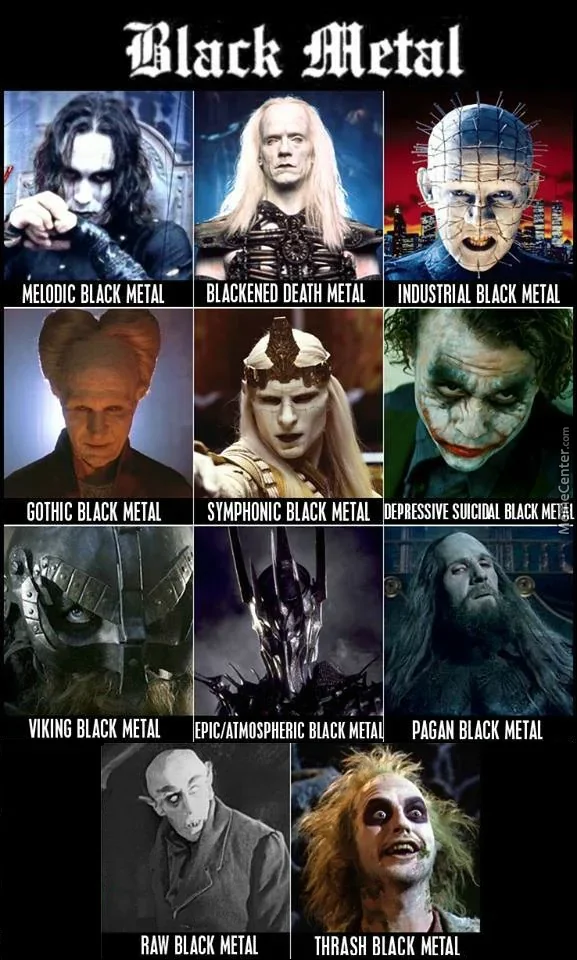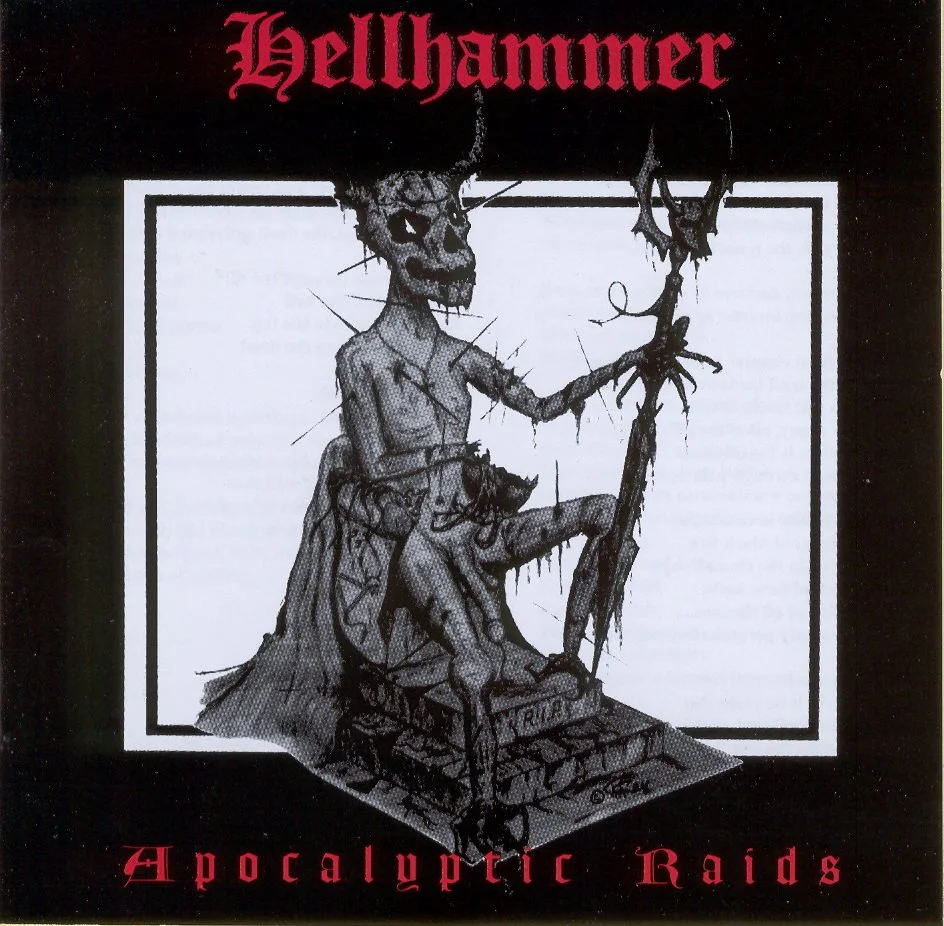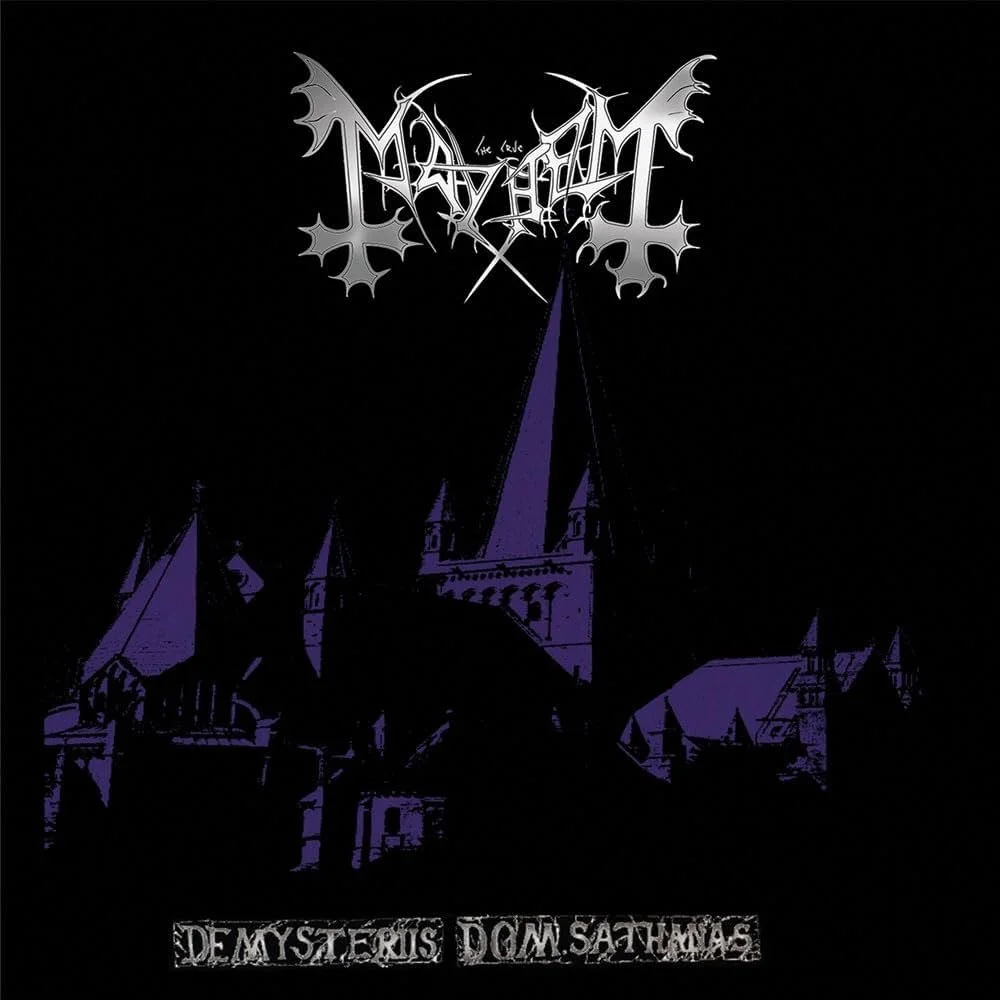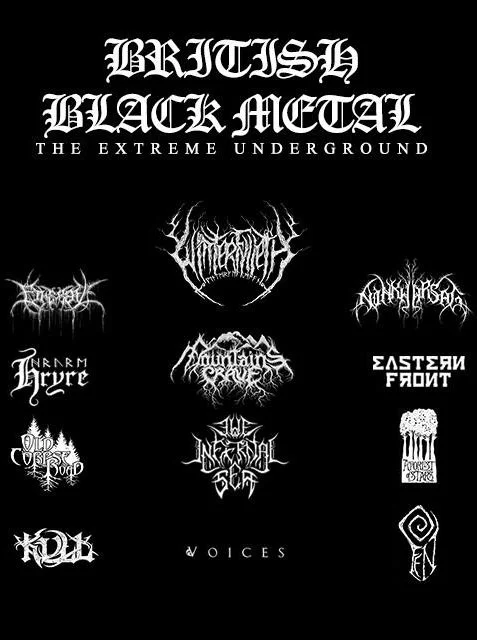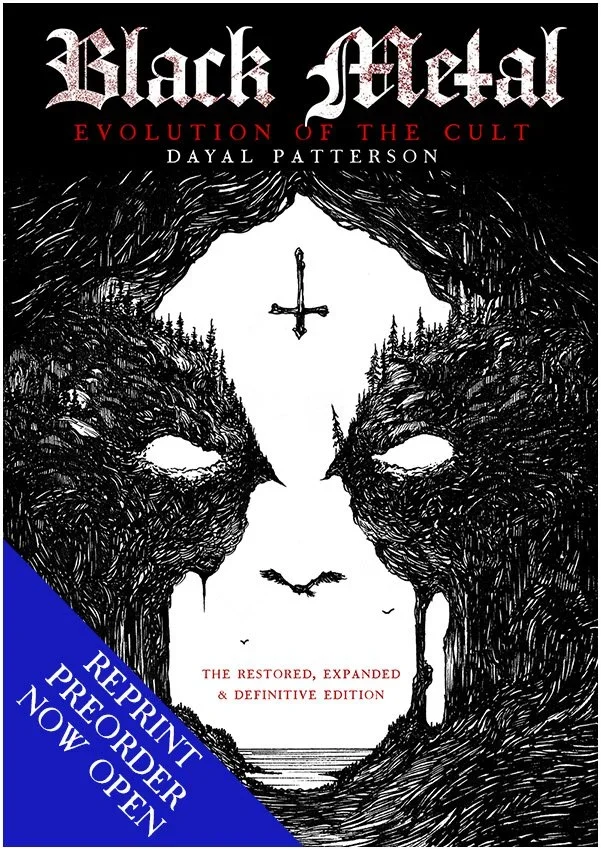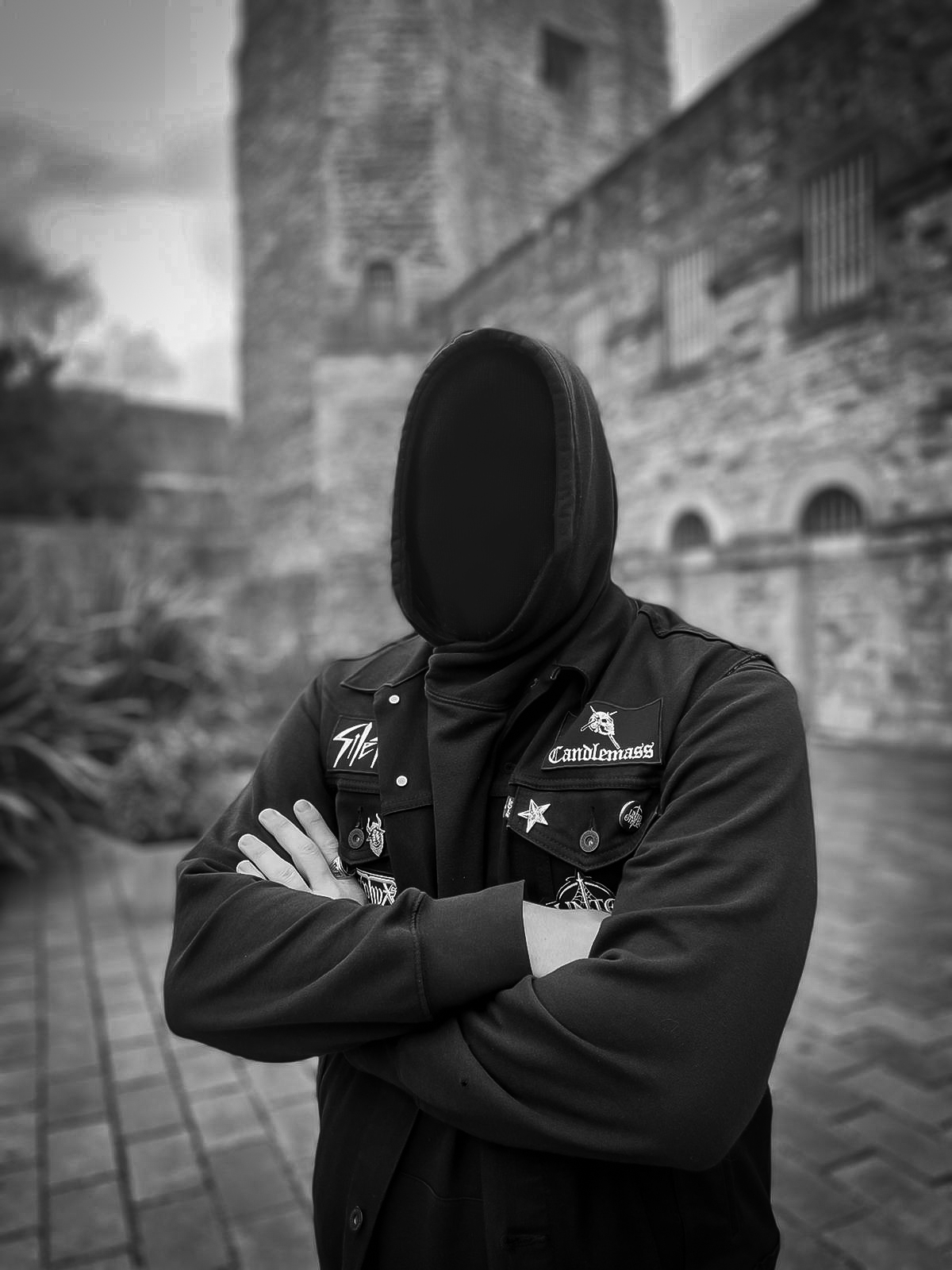Essential Black Metal Bands for Beginners 101: From Abbath to Zyklon-B
Are you new to Black Metal and wondering where to start? If you're asking, What is black metal? or What are the best black metal bands for beginners? this guide is for you. Black metal, an extreme sub-genre of heavy metal music, has captivated fans with its raw intensity, atmospheric soundscapes, and controversial themes since the 1980s.
In this beginner's guide to black metal, we'll explore its origins, musical and lyrical distinctions, rise to fame, sub-genres, essential bands with their greatest albums and songs, the unique UK black metal scene, its impact on popular culture and media, and how it's evolved into 2025. Whether you're discovering black metal history or seeking essential black metal albums, we've got you covered with in-depth insights tailored for newcomers.
Black metal isn't just music, it's a cultural phenomenon that blends aggression with artistry. From the chilling riffs of Norwegian black metal pioneers to modern fusions, this genre offers endless exploration. Let's dive in, starting with the basics for black metal beginners.
Venom (Anthony "Abaddon" Bray, Conrad "Cronos" Lant, and Jeffrey "Mantas" Dunn)
What Are the Origins of Black Metal?
Black metal's roots trace back to the early 1980s, emerging as an extreme offshoot of heavy metal during what's known as the "first wave of black metal." Influenced by thrash metal, punk, and hard rock, it began in Europe with bands pushing boundaries beyond the mainstream metal of the time.
The genre's name comes from Venom's 1982 album Black Metal, which coined the term and set a blueprint for its dark aesthetic. Venom, from Newcastle, England, fused speed metal with Satanic imagery, creating a raw, aggressive sound that rejected polished production.
Bands like Bathory from Sweden and Hellhammer from Switzerland followed, incorporating occult themes and lo-fi recordings. Bathory's self-titled 1984 debut album introduced Viking mythology, blending thrash with atmospheric elements that would define later black metal.
By the late 1980s, black metal faded temporarily due to death metal's rise, but it laid the groundwork for a more extreme evolution. This first wave influenced not just black metal but also crust punk and war metal, showing its broad impact on extreme music scenes.
Tom G Warrior of Hellhammer, Celtic Frost, and Triptykon
What Makes Black Metal Musically and Lyrically Different?
Black metal characteristics are a really unique one as the genre stands out for its fast tempos, shrieking vocals, and heavily distorted guitars played with tremolo picking, a technique creating a buzzing, continuous riff.
Unlike thrash metal's precise riffs or death metal's guttural growls, black metal emphasises atmosphere over technicality, often using blast beats (rapid drumming) and raw production to evoke cold, desolate feelings.
Lyrically, black metal also diverges with themes of anti-Christianity, Satanism, paganism, nature, and misanthropy. Early songs drew from occult literature, contrasting much of heavy metal's party anthems. This "evil" aesthetic, including corpse paint (white face makeup with black accents), became iconic, setting black metal apart as a rebellious art form.
For beginners, these elements might seem overwhelming, but they create an immersive experience, like stepping into a frozen forest at midnight.
How Did Black Metal Rise to Prominence?
The "second wave of black metal" in the early 1990s, centered in Norway, propelled the genre to infamy. Bands like Mayhem, Burzum, and Emperor formed an underground scene around Oslo's Helvete (Now called Neseblod) record shop, owned by Mayhem's Euronymous. Tragic events, including suicides, murders, and church burnings (over 50 in Norway), drew global media attention, associating black metal with real-world controversy.
At it’s peak Norwegian black metal drew international prominence when Burzum's Varg Vikernes murdered Euronymous in 1993, amplifying the genre's dark reputation. Between the suicide of their singer Dead, the murder of Euronymous, and the church burnings perpetuated by Varg, Norwegian black metal had planted it’s misanthropic flag in the ground. Musically, albums like Mayhem's De Mysteriis Dom Sathanas (1994) became landmarks, blending aggression with melody. This notoriety helped black metal spread worldwide, influencing scenes in Sweden, Finland, and beyond.
What Subgenres Did Black Metal Create?
Black metal's evolution spawned diverse subgenres, each adding unique twists.
Symphonic Black Metal: Incorporates orchestral elements for epic soundscapes, as in Dimmu Borgir's Enthrone Darkness Triumphant (1997).
Melodic Black Metal: Emphasises catchy, melodic riffs while retaining black metal’s aggression and atmosphere, appealing to fans of accessible yet dark sounds. Bands like Dissection pioneered this with intricate guitar work. Check out Storm of the Light’s Bane, (1995) for its melodic yet brutal riffs; or Rotting Christ (Theogonia, 2007) for blending Greek mythology with soaring melodies.
Atmospheric Black Metal: Focuses on ambient, nature-inspired moods, like Burzum's ambient works in Dunkelheit.
Blackgaze: Blends black metal with shoegaze, pioneered by Alcest and popularised by Deafheaven.
Blackened Death Metal: Merges with death metal for brutal intensity, seen in Behemoth. Check out O Father O Satan O Sun!
Pagan/Folk Black Metal: Draws from ancient folklore and sounds, like Enslaved's Viking themes.
DSBM (Depressive Suicidal Black Metal): Centres on themes of despair, depression, and existential anguish, often with slower tempos and mournful atmospheres. It’s raw and emotional, resonating with introspective listeners. Listen to Shining (V – Halmstad, 2007) for its haunting, suicidal themes; Xasthur (Telepathic with the Deceased, 2004) for lo-fi, depressive soundscapes; and Lifelover (Konkurs, 2008) for blending post-punk with bleakness.
NSBM (National Socialist Black Metal): Easily the most controversial sub-genre with extreme political ideologies, often tied to nationalist themes, shunned by mainstream black metal communities. Its music retains raw black metal traits but is divisive due to its messaging and sheer lack of logic and cognitive mapping.
Epic/Atmospheric Black Metal: Combines grand, cinematic compositions with atmospheric elements, often evoking mythological or historical narratives. It’s less raw, focusing on sweeping, immersive soundscapes. Some great examples include Summoning (Dol Guldur, 1997) for its Tolkien-inspired epic sound; Moonsorrow (V: Hävitetty, 2007) for its expansive, folk-infused epics; and Saor (Aura, 2014) for Celtic-inspired atmospheric grandeur.
Industrial Black Metal: Fuses black metal with industrial music’s mechanical, electronic textures, creating a cold, dystopian sound. It blends harsh riffs with synthetic elements. The OG of this sub-genre is Rammstein (early works like Herzeleid, 1995). They’re known for industrial-tinged provocation. Also check out The Kovenant (Animatronic, 1999) for cyber-metal fusion; and Dødheimsgard (666 International, 1999) for experimental industrial-black blends.
Raw Black Metal: Strips black metal to its barest, most unpolished form, emphasising lo-fi production, abrasive riffs, and minimalistic aggression. It’s the genre’s purest, most underground style. Great go-to’s are Darkthrone (Transilvanian Hunger, 1994) for its iconic raw sound; Gorgoroth (Pentagram, 1994) for unrelenting brutality; and Tsjuder (Desert Northern Hell, 2004) for ferocious, unrefined energy.
Viking Black Metal: Infuses black metal with Norse mythology and Viking imagery, often incorporating folk melodies and epic storytelling. It’s atmospheric yet fierce. I recommend starting with Bathory (Hammerheart, 1990) for their pioneering Viking themes; Enslaved (Eld, 1997) for progressive Viking narratives; and Windir (1184, 2001) for melodic, folk-infused Viking tales.
Other niches include Cosmic Black Metal (Darkspace), Orthodox Black Metal like Batushka, emphasising ritualistic elements, and Blackend Roll that incorporates a more thrashy sound and speed, like Midnight. These sub-genres make black metal accessible for beginners exploring beyond the classics.
Essential Black Metal Bands for Beginners: Greatest Albums and Songs
Below are must-know bands recommended by The Heavy Metal Citadel for any beginner in the black metal scene. These are beginner-friendly albums and songs, but fear not there are more underground, extreme, and violent bands that we will cover elsewhere. You’ve gotta listen to these before going any further though.
Venom (1981)
Venom, as I mentioned before, hailing from Newcastle, England, birthed black metal with their raw, rebellious sound that fused punk's energy with heavy metal's aggression. Their seminal album Black Metal (1982) defined the genre's name and aesthetic, blending speed metal with Satanic imagery that shocked the mainstream. Their song "Black Metal," is anthemic, gritty riff and Cronos' snarling vocals make it an instant classic for beginners.
The raw production and provocative lyrics set a template for black metal's anti-establishment ethos, making it a perfect entry point for new listeners exploring the genre's origins. This band led others into deeper and darker territory, philosophy and sounds.
Hellhammer (1982)
Hellhammer, from Zurich, Switzerland, laid the groundwork for black metal's lo-fi, grim aesthetic with their short-lived but massively influential career. Their 1984 demo Satanic Rites is a cult classic, characterised by primitive riffs and a dark, doomy vibe that contrasted with thrash's precision.
The song "Triumph of Death," is slow, oppressive atmosphere and raw vocals capture early extremity. Hellhammer's unpolished sound influenced second-wave bands like Mayhem. This band offers you a glimpse into black metal's primal roots and its evolution from punk and doom influences.
Celtic Frost (1984)
Celtic Frost, was formed in Zurich, as well, by ex-Hellhammer members Tom G. Warrior and Martin Eric Ain. They pushed black metal's boundaries with experimental and gothic elements. Their 1985 album To Mega Therion is a cornerstone, blending proto-black metal with orchestral flourishes and a dark, theatrical vibe.
If there’s one song you have to listen from Celtic Frost I recommend "Circle of the Tyrants," its crushing riffs and Warrior's haunting vocals bridge thrash and black metal. Celtic Frost's innovative mix of raw aggression and artistic ambition influenced countless bands, making it a must-listen for anyone doing a deep dive into Black Metal.
So if you’re curious about black metal's diverse roots and its crossover with other extreme genres you need to check out Celtic Frost.
Bathory (1984)
Founded by Quorthon (Thomas Forsberg) in Stockholm, Sweden, Bathory transitioned from thrash-inspired chaos to pioneering Viking black metal, shaping the genre's atmospheric side. Under the Sign of the Black Mark (1987) is essential listening for any beginner, with its raw energy and eerie ambiance.
"Enter the Eternal Fire," is one must-listen-to tracks with its hypnotic riffs and Quorthon's shrieking vocals showcasing their early innovation. Bathory introduced Viking mythology and atmospheric textures, influencing pagan and folk subgenres, making it ideal for beginners seeking a blend of raw power and storytelling.
Mayhem (1984, significant black metal contribution 1990s)
Mayhem, Norway's infamous second-wave pioneers that I mentioned earlier, defined black metal's dark reputation through their music and turbulent history. Arguably one of the most well known and now mainstream bands, we can discuss Mayhem to death.
But from a musical perspective it’s important to note that De Mysteriis Dom Sathanas (1994) is a landmark album, blending aggressive riffs with melodic undertones. The band though was not without it’s insane and tragic past, including Dead’s suicide, Euronymous’ murder, and Varg’s arrest for murder.
But back to the music, I recommend listening to the song: "Freezing Moon," its chilling riffs and Dead’s iconic shrieks embody the genre’s darkness. Iconic for its historical weight and haunting sound, it’s perfect for beginners wanting to explore black metal’s raw intensity and cultural impact.
Darkthrone (1986, black metal shift 1991)
Originally a death metal outfit from Kolbotn, Norway, Darkthrone embraced black metal’s raw aesthetic with their shift in the early 1990s. Transilvanian Hunger (1994) is lo-fi perfection, recorded with minimalist production to emphasise atmosphere over polish. Check out "Transilvanian Hunger," its relentless tremolo riffs and Fenriz’s raspy vocals epitomise purist black metal.
The album’s hypnotic simplicity and raw energy make it accessible for beginners, showcasing the genre’s commitment to authenticity and emotional depth. It’s also got some of the most famous riffs and tracks in all of black metal.
Burzum (1991)
Varg Vikernes’ one-man project, Burzum (pronounced “Buhr-tsu-m”) from Bergen, Norway, defined ambient black metal despite Varg’s controversial legacy. Varg not only found his musical calling with Black Metal but also a philosophy. Although strange and contradictory, Varg wandered down a nationalistic, racist, homophobic, fascist wormhole. He basically took on everything except Satanism. The results were various churches being burned by his hands and at least one murder.
When Varg wasn’t murderering and burning churches to return to some glorified pagan past he was making songs that would dictate a genre. Varg recorded Filosofem (1996), in prison, and become iconic for its repetitive, trance-like compositions. "Dunkelheit," is still one of his most popular tracks with eerie keyboards and minimalist riffs he creates an immersive, otherworldly vibe.
Burzum is profoundly minimalistic, but with atmospheric depth making it a standout for beginners exploring lyrical and experimentation, though Vikernes’ actions require considerable review for new listeners. Varg now makes TikToks in his camo sweatpants in the forest. Truly returning to his traditional pagan roots!
Emperor (1991)
Emperor, from Notodden, Norway, elevated black metal with symphonic grandeur, blending aggression with orchestral complexity. In the Nightside Eclipse (1994) is majestic yet fierce, a cornerstone of the second wave.
If you’ve never listened to Emperor I recommend "I Am the Black Wizards." The lush keyboards, Ihsahn’s piercing vocals, and relentless riffs create an epic soundscape.
Emperor balances innovation with tradition, making it ideal for beginners who enjoy melodic and theatrical elements in extreme music.
Gorgoroth (1992)
Gorgoroth, from Bergen, Norway, embodies raw, uncompromising black metal with a focus on Satanic and misanthropic themes. Pentagram (1994) is a brutal debut, showcasing relentless aggression.
"Crushing the Scepter" is one of many classic you need to listen to. It’s intense blast beats and Infernus’ venomous vocals deliver pure evil. And what’s best is their unapologetic intensity is perfect for fans seeking black metal’s rawest form, offering beginners a taste of the genre’s darkest edge.
Immortal (1992)
Fronted by Abbath (one of black metal’s most zaniest characters), Immortal from Bergen, Norway, brings theatrical, frostbitten imagery with their tales of icy realms. At the Heart of Winter (1999) is a masterpiece, blending melodic riffs with epic storytelling. "Withstand the Fall of Time," has this epic marching rhythm and Abbath’s raspy screams evoke Norwegian winters and darkness like few bands before managed to capture.
The album’s atmospheric production and accessible melodies make it beginner-friendly, ideal for those drawn to vivid imagery and dynamic songwriting.
Enslaved (1994)
Enslaved, from Haugesund, Norway, pioneered progressive Viking black metal, fusing folk and Norse mythology. Eld (1997) is a standout, weaving epic narratives with raw aggression. First timers should spin "793 (Slaget om Lindisfarne)," its folk-infused riffs and Grutle’s commanding vocals tell a historical saga.
Ensalved evolving sound and storytelling appeal to progressive-minded beginners exploring black metal’s thematic depth.
Zyklon-B (1995)
While not one most people immediately discuss I recommend checking out Zyklon-B, a short-lived Norwegian supergroup featuring Emperor members. They delivered raw, hateful black metal. Their 1995 demo Blood Must Be Shed is a cult favorite for its unrelenting aggression.
Try the track "Warfare," its ferocious blasts and scathing vocals embody second-wave intensity. Zyklon-B also bridges first and second waves, offering beginners a raw, compact introduction to black metal’s extreme roots.
Dimmu Borgir (1996, significant contribution 1997)
Dimmu Borgir, from Oslo, Norway, led symphonic black metal with lush, orchestral arrangements. Enthrone Darkness Triumphant (1997) blended keyboards with relentless aggression for grandeur. While not my favourite, I’d recommend "Mourning Palace."
The orchestral swells meet Shagrath’s fierce vocals and blast beats. Its accessible melodies and polished production make it a gateway for newcomers to symphonic black metal’s dramatic flair.
The UK Black Metal Scene: Bands, History, and Unique Impact
As a UK-based metalheads, we need to put a quick spotlight on the UK black metal (UKBM) scene, often overshadowed by Norway but vibrant and innovative. Venom kickstarted it in the 1980s, but the 1990s saw growth with Cradle of Filth's gothic symphonic style.
Cradle of Filth's Cruelty and the Beast (1998) is a UKBM staple, with vampire themes. Their track "Cruelty Brought Thee Orchids," theatrical vocals and lush instrumentation.
There are also other key bands like Akercocke, who blended in death metal, Anaal Nathrakh, who infused more industrial aspects, and Winterfylleth who drew from English heritage. UKBM's eclectic approach, mixing progressive and folk elements, has influenced global scenes, proving Britain's role in black metal diversity. So be sure to check out Cradle of Filth, Akercocke, Anaal Nathrakh, and Winterfylleth.
Chern and I here at The Heavy Metal Citadel did a two-part episode on our Heavy Metal Citadel podcast where Winterfylleth, Fen, Wolvencrown, and others discussed the UKBM scene. So listen to the full episode below if you want to here more for the artists themselves.
How Has Black Metal Impacted Popular Culture and Media?
Black metal’s influence stretches far beyond its raw riffs and shrieking vocals, leaving an indelible mark on fashion, film, literature, and cultural discourse. So how has black metal impacted pop culture? this section dives deep into its far-reaching effects.
From corpse paint shaping goth fashion to controversies sparking global debates, black metal has transcended its underground roots to become a cultural phenomenon. Here’s how this extreme genre has shaped alternative culture and mainstream media, making it a fascinating topic for beginners exploring black metal’s legacy.
Fashion: Corpse Paint and Gothic Influence
Black metal’s iconic corpse paint, white face makeup with black accents, has become a hallmark of the genre, influencing fashion far beyond concert stages. Originating with bands like Mayhem and Emperor, corpse paint symbolises rebellion and otherworldly aesthetics, inspiring goth, punk, and alternative fashion scenes.
Designers have adopted its stark contrasts in streetwear, while makeup brands market “black metal-inspired” looks for Halloween and cosplay. In the 2020s, corpse paint has appeared in high-fashion editorials, blending black metal’s dark allure with mainstream trends. This visual legacy makes black metal a style touchstone, accessible even to newcomers curious about black metal fashion trends.
Film and Documentaries: Dramatizing the Dark
Black metal’s dramatic history has inspired filmmakers, bringing its stories to wider audiences. The 2018 film Lords of Chaos dramatised the Norwegian black metal scene’s infamous events, including Mayhem’s tragedies and church burnings, introducing the genre to non-metal fans.
Documentaries like Until the Light Takes Us (2008) explore the music and its controversies, offering raw insights into the 1990s scene. These films, available on streaming platforms, have boosted wider interest in black metal documentaries, making them a gateway for beginners. Black metal’s cinematic appeal lies in its mix of artistry and infamy, resonating with audiences seeking gritty, real-world stories.
Literature: Occult and Philosophical Inspirations
Black metal’s lyrical themes, Satanism, paganism, and existentialism, have influenced literature, particularly in horror and occult genres. Authors like Laird Barron weave black metal’s dark mysticism into cosmic horror novels, while academic works, such as Black Metal: Evolution of the Cult by Dayal Patterson, analyse its cultural impact.
Zines and fan publications, rooted in the genre’s DIY ethos, continue to thrive, with online platforms like Bandcamp hosting black metal-inspired essays. For beginners searching “black metal books,” these works offer intellectual entry points, blending philosophy and folklore with the genre’s raw energy.
Controversies and NSBM: Cultural Debates
Black metal’s controversies, particularly surrounding NSBM (National Socialist Black Metal), have kept it in the media spotlight. NSBM, a divisive sub-genre with nationalist and extremist ideologies, emerged in the 1990s with bands like Graveland and Absurd. Its association with hate ideologies has sparked widespread condemnation from the broader black metal community, leading to debates about art versus ideology.
High-profile incidents, like the previously mentioned church burnings in Norway and Varg Vikernes’ actions, have fueled social commentary on extremism, with even outlets like The Guardian covering NSBM controversy in music. These discussions have driven greater inspection into black metal controversies, engaging curious newcomers while highlighting the genre’s complex cultural impact.
Fan Communities and Cultural Discourse
Black metal fosters intelligent, passionate fan communities that shape its cultural footprint. Online forums like Reddit’s r/BlackMetal and Discord servers host discussions on philosophy, spirituality, and music theory, reflecting the genre’s intellectual depth. Zine culture, revived in the 2020s, connects fans through DIY publications, while festivals like Inferno in Norway draw global audiences. These communities build greater connection for black metal fan culture, creating a sense of belonging for beginners.
Will Black Metal Continue to Survive In 2025?
Black metal has undergone a remarkable evolution since its raw, aggressive beginnings in the 1980s, transforming from a niche, rebellious sub-genre into a dynamic force that blends with diverse musical styles and embraces global influences. It has taken a journey from the frostbitten riffs of Norway to modern hybrids incorporating post-metal, ambient, and even hip-hop influences like with Kanye West copying Burzum’s album cover.
In 2025, black metal continues to thrive with increased inclusivity, and vibrant underground scenes, keeping the genre relevant and accessible for beginners. Stay tuned as we’ll follow up with more deep dives into the history of black metal and beyond. So let us know what you want to know more about by sending us a comment below!
Written by: Chort the Crop Infestor
“Hi, I’m Chort I infest crops and listen to Black Metal!”





